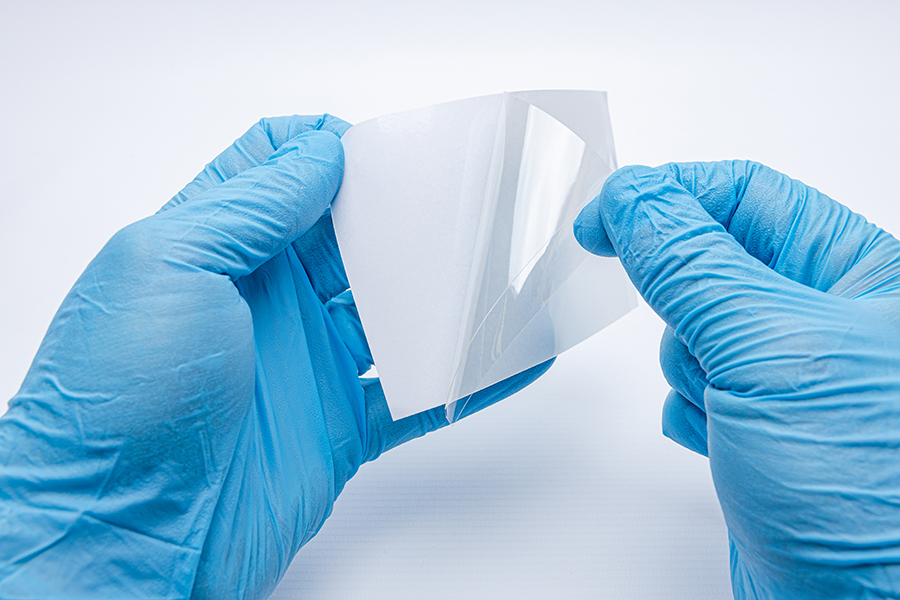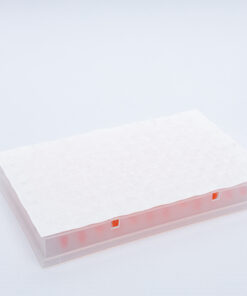Heat-sealable sealing films for microplates are an essential consumable in many laboratory applications. They are used to seal microplates, protecting the samples from evaporation, contamination, and other potential hazards.
These films can be made from a variety of materials and come in different formats, making it important to choose the right one for your specific application.
In this guide, we will cover the key factors to consider when selecting a heat-sealable sealing film for microplates, including the type of microplate, the type of samples, the conditions they will be stored in, the type of heat sealing equipment, the sealing temperature and pressure requirements, the materials, and the format of the film.
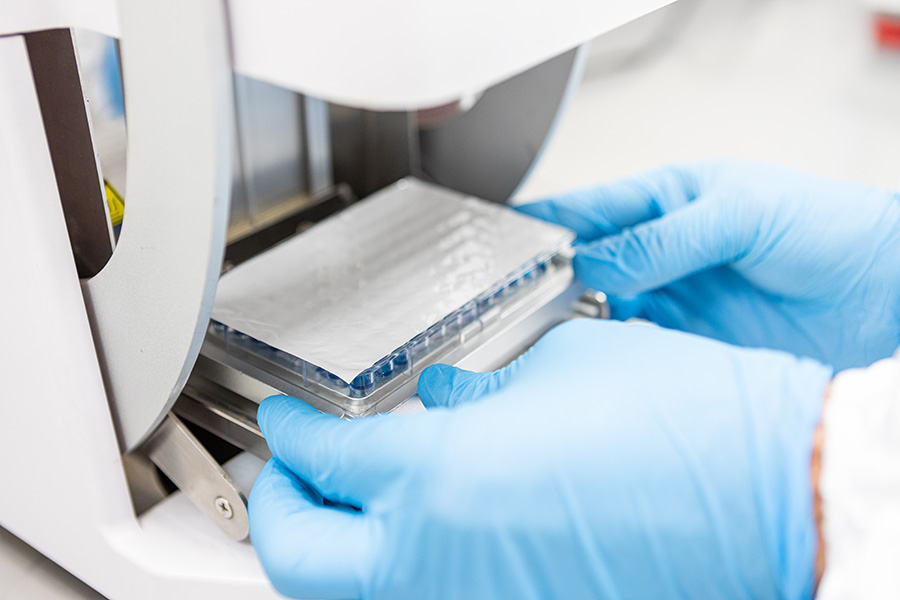
What is a Heat-Sealable Microplate Sealing Film?
Heat-sealable (also known as a thermal seal) sealing films for microplates are thin, flexible sheets usually made from plastic polymers or aluminium that are heat-sealed to the upper surface of a microplate.
Heat-sealing creates an airtight seal to form a very strong and often permanent barrier, protecting samples from drying out, contamination, and other potential hazards.
Have a look at the Different Types of Plate Sealing Films.
How do Heat-Sealable Microplate Sealing Films work?
Heat-sealable microplate films seal microplates using a film or foil placed on top of a microplate which is then heated to melt an adhesive to the plate. The seal can be permanent or temporary and requires specialised heat sealing equipment to ensure adequate sealing.
It’s important to make sure that the heat-sealing film you choose is compatible with your microwell plate or your seal may not form/ be inadequate. This information will be available from the supplier. In some cases, specialised plates that have raised rims or wells can also help to form optimal heat seals.
Materials used in Heat-Sealable Sealing Films
The materials used in heat-sealable sealing films for microplates are usually some form of plastic or aluminium foil.
Plastic polymer Heat-Sealable Films
Polyethylene (PE) Heat-Sealable Films
Polyethylene (PE) heat-sealable films are the most common type of heat-sealable film for microplates and are best for applications that require low temperatures and pressure.
They provide excellent moisture resistance and are often coated with silicone to improve their sealing strength, durability, and water vapour transmission rate (WVTR).
Polyethylene (PE) heat-sealable films come in a variety of formats including peelable, perforated and pierceable.
Polypropylene (PP) Heat-Sealable Films
Polypropylene (PP) heat-sealable films are an alternative to PE heat-sealable films and work best in higher temperature and pressure environments.
They provide superior sealing performance at higher temperatures and pressures compared to PE heat-sealable films and do not require coating with silicone.
Polypropylene (PP) heat-sealable films come in a variety of formats including peelable, perforated and pierceable.
Non-woven Heat-Sealable Films
Nylon and Rayon are common materials used for non-woven heat-sealable films. These materials are strong and heat resistant, and also have good chemical resistance. The non-woven nature of the material also makes these films breathable and ideal for cell culture applications requiring gas permeability.
Foil-Based Heat-Sealable Films
Foil-based heat-sealable films are ideal for applications that require extremely heat tight seals, as well as high insulation from heat and light. They provide superior sealing strength and excellent barrier properties against moisture, oxygen, and other gases.
In addition, foil-based heat-sealable films are ideal for applications where sterilisation is required, such as medical devices and equipment.
Foil-based heat-sealable films come in a variety of formats including peelable, solvent resistant (including DMSO) and pierceable
Heat-Sealable Sealing Film Formats
Heat-sealable sealing films are available in a wide range of formats, including rolls, individual access, strips, sheets, and pre-cut formats to fit specific microplates.
Rolls are the most common format for heat-sealable sealing films. They are typically made from a continuous web of material and are wound onto a core. Rolls are convenient for large-scale microplate operations and can be easily dispensed using a variety of dispensing equipment.
Individual sheets are another common format for heat-sealable sealing films. They are typically cut to a specific size and are suitable for manual or semi-automatic sealing operations. Sheets are often used for small-scale or low-volume packaging operations.
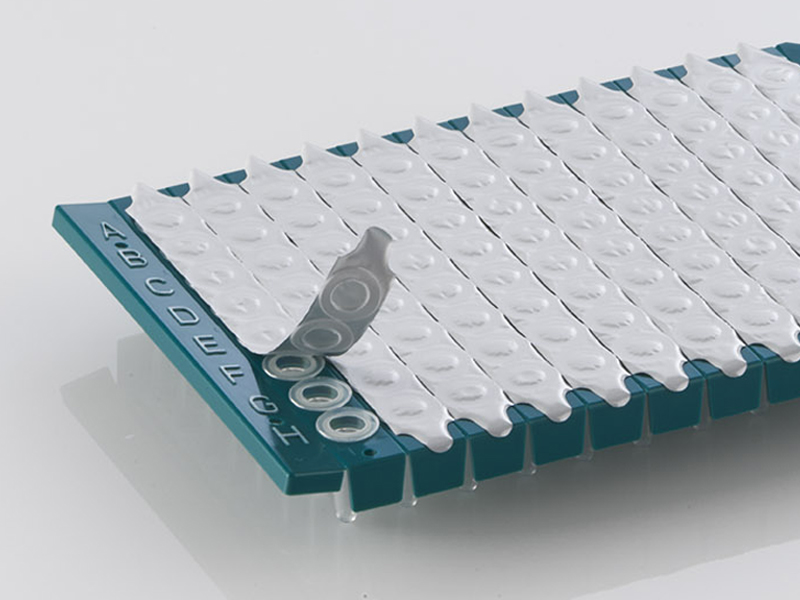
Applications and Uses of Heat-Sealable Sealing Films in the Laboratory
Heat-sealable sealing films are used in various laboratory applications and offer many advantages over traditional lid-style closures. They are available in different formats, each with its own unique set of uses. Heat-sealable films provide strong, long-lasting seals (that may or may not be peelable) and are ideal for long-term storage of samples, applications involving high or low temperatures, and applications where minimising cross-contamination is important.
Optically clear plastic polymer films
Optically clear heat sealable microplate sealing films are ideal for applications where visualising of samples is important and assay applications where samples are not light sensitive. Some examples include:
- ELISA
- PCR
- Sample storage
- Fluorescence assays
- Storage and disposal of hazardous materials
- Sealing of solvent to prevent evaporation

Foil heat-sealable films
Heat-sealable foil microplate seals are usually a laminate of aluminium and plastic polymer and provide the benefits of optically clear films with added temperature resistance, protecting samples from light, and improving temperature resistance. Uses include:
- PCR
- sample storage (especially at extreme temperatures)
- Protecting samples from light

Non-woven heat-sealable films
These microplate seals are primarily used in cell culture as they have the benefit of being gas permeable, but not permeable to liquids and contaminants. These films also offer good chemical and temperature resistance.
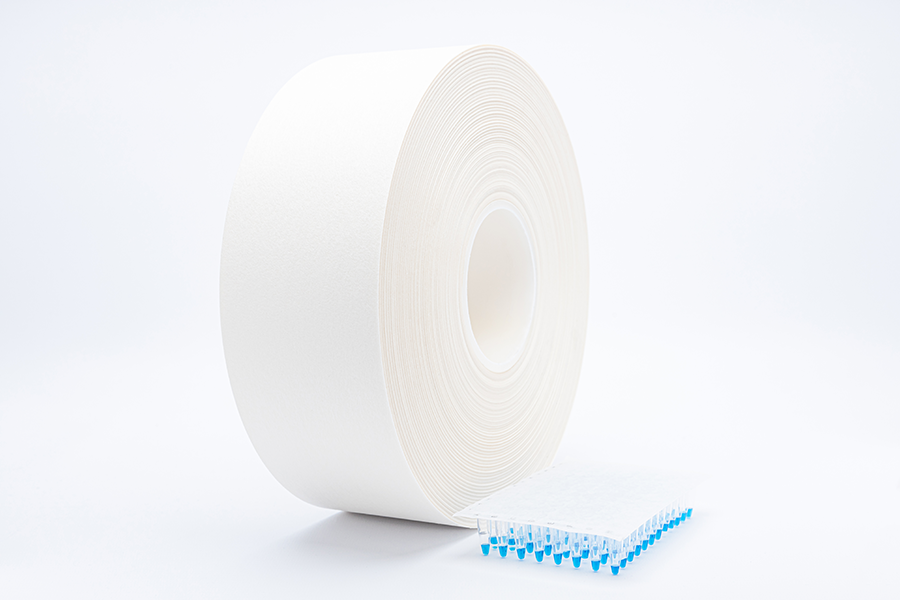
Uses of different heat-sealable microplate sealing film formats
Sealing films for microplates are available in many different formats, each of which is ideal for different purposes.
Sealing film rolls
Roll sealing film is a continuous length of heat-sealable sealing film that can be cut to size and heat-sealed to microplates of various sizes. It is ideal for use in high-volume laboratory applications and can be used in automated heat-sealing equipment.
Sealing Film Sheets
Heat-sealable sealing film sheets are single pieces of heat-sealable sealing film that can be used to seal individual microplates. These sheets offer a convenient solution for sealing smaller numbers of microplates and are ideal for manual heat-sealing equipment or for use in low-volume laboratory applications.
They also provide the added benefit of being able to select the exact size and shape of the sealing film to match the microplate being used, ensuring a secure and airtight seal.
Individual Access Sealing Film
Individual access sealing films are laminate seals featuring 96 individual foil seal spots or 12 strips of individual spots each covering 8 wells on a removable backing. This is ideal for PCR applications where strip tubes rather than full plates are being used. These individual access sealing films are available as sheets, for use with manual and semi-automatic sealing equipment.
Microplates have various dimensions, well configurations, and temperature and pressure requirements, so it is important to choose a heat-sealable sealing film that is compatible with your specific microplate and application requirements as well as with your heat-sealing equipment.

Types of Heat Sealing Equipment used for Heat-Sealable Sealing Films
Another important consideration when selecting the right heat-sealable sealing film for your application is the type of heat-sealing equipment you will be using.
Some heat sealers require a specific type of film, so it is important to choose a film that is compatible with your equipment. Additionally, you will need to consider the sealing temperature and pressure requirements of your heat-sealing equipment, as different heat-sealing films have different sealing parameters.
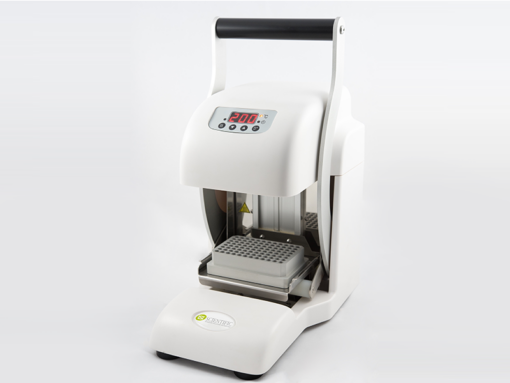
How to use Heat-Sealable Films Correctly to Achieve the Best Results Possible
Using heat-sealable sealing films correctly is essential to achieve the best results possible. Here are some tips to ensure the proper use of heat-sealable adhesive films:
– Use the Correct Heat-Sealable Microplate Sealing Film
Verify that the heat-sealable film is compatible with the microplate you intend on using. Not all heat-sealable films are compatible with all microplates. It’s important to check the film’s specifications to ensure that it is suitable for the microplate.
– Use the Correct Heat-Sealable Sealing Film Format
The heat-sealable film format should be chosen based on the heat-sealing equipment being used. Heat-sealable films can be purchased in rolls, pre-cut pieces, or sheets. Roll heat-sealable films are typically used with heat-sealing machines, while pre-cut pieces or sheets of heat-sealable film are more suited for semi-automatic sealing applications.
– Use the Correct Heat-Sealing Equipment
The type of heat-sealing equipment used will depend on the film’s thickness and the type of microplate being sealed. It’s important to use the correct equipment to ensure a strong, tight seal and avoid damage to the film or plate
– Set the Correct Temperature and Pressure
Temperature and pressure settings should be adjusted according to the heat-sealable film type, the heat-sealing equipment being used, the heat-sealer bar size, and the heat-sealing jaws.
Heat-sealing temperatures should always be kept below the melting point of the heat-sealable film for optimal performance. Pressure settings will vary depending on the heat-sealing equipment as well as the heat-seal time.
– Perform Heat-Seal Tests to Ensure Effective Heat Sealing
Heat-seal tests should be performed periodically to verify that a proper airtight seal has been achieved. This can be done by cutting an area of the sealed microplate and inspecting the edges for any leaks, wrinkles or bubbles.
– Clean the Heat Sealing Equipment
Heat-sealing equipment should be cleaned regularly to ensure maximum heat-sealing performance.
Heat-sealable films can easily become contaminated if the heat-sealing equipment is not kept clean and free from dust or debris. Heat-sealers, heat-sealer bars, and heat-sealing jaws should be wiped down with a clean cloth to remove any dirt or residue.
– Inspect the Heat-Sealable Sealing Film Quality
After sealing, it’s essential to inspect the seal to ensure that it is strong and free of defects. Any defects in the seal can result in leaks or contamination of the package’s contents.
– Store and Handle the Heat-Sealable Sealing Film Correctly
Storing and handling heat-sealable sealing films correctly is important to maintain their quality and integrity. The films should be stored in a cool, dry place, away from direct sunlight and other sources of heat and humidity. They should also be protected from physical damage, such as punctures or tears, to prevent contamination or loss of the film’s barrier properties.

Get Expert Help Choosing The Best Heat-Sealable Plate Sealing Film For Your Needs
Choosing the best heat-sealable microplate sealing film for your needs can be a complex process, and getting expert help can be invaluable. iST Scientific is a reputable provider of heat-sealable microplate sealing films and has a team of experts who can help you select the best film for your specific application.
At iST Scientific, we can help you to evaluate the different materials, formats, and properties of the films, and recommend the one that best meets your needs. Our team can also provide technical support and guidance throughout the entire process, from selection to implementation.
With our expertise, you can be sure that you are getting the best heat-sealable sealing film for your needs. Explore our expansive selection available to find the perfect solution for your laboratory requirements.

